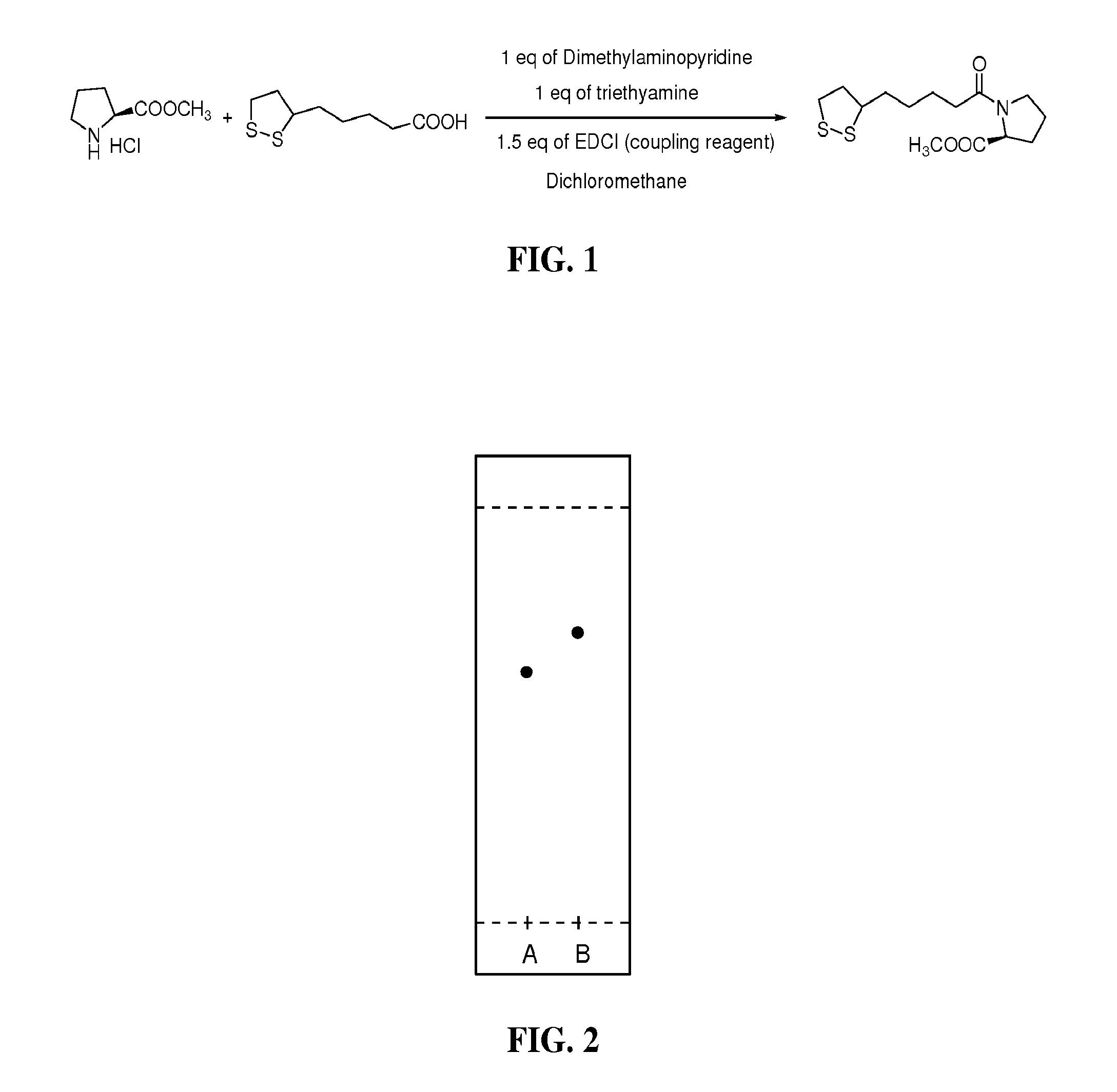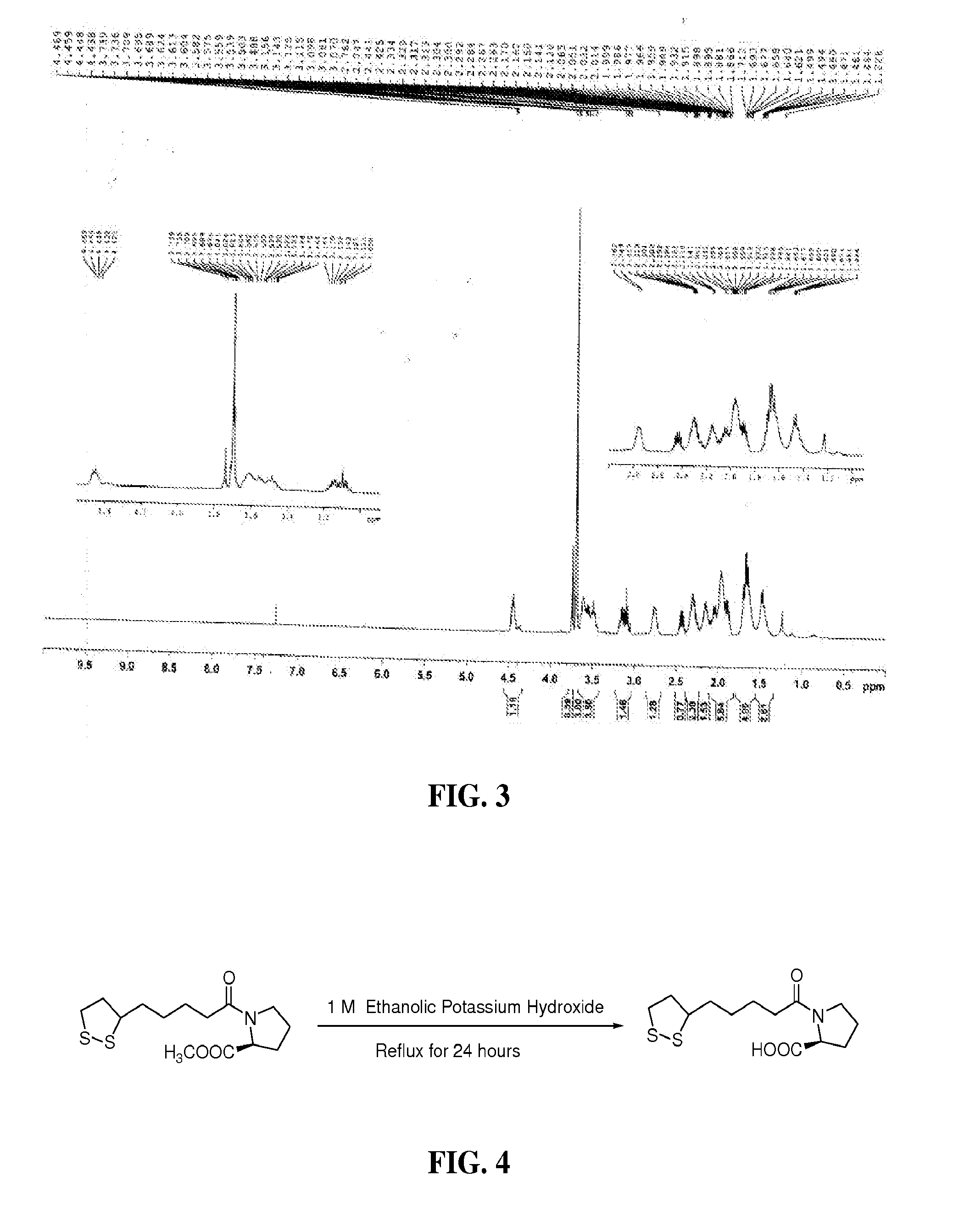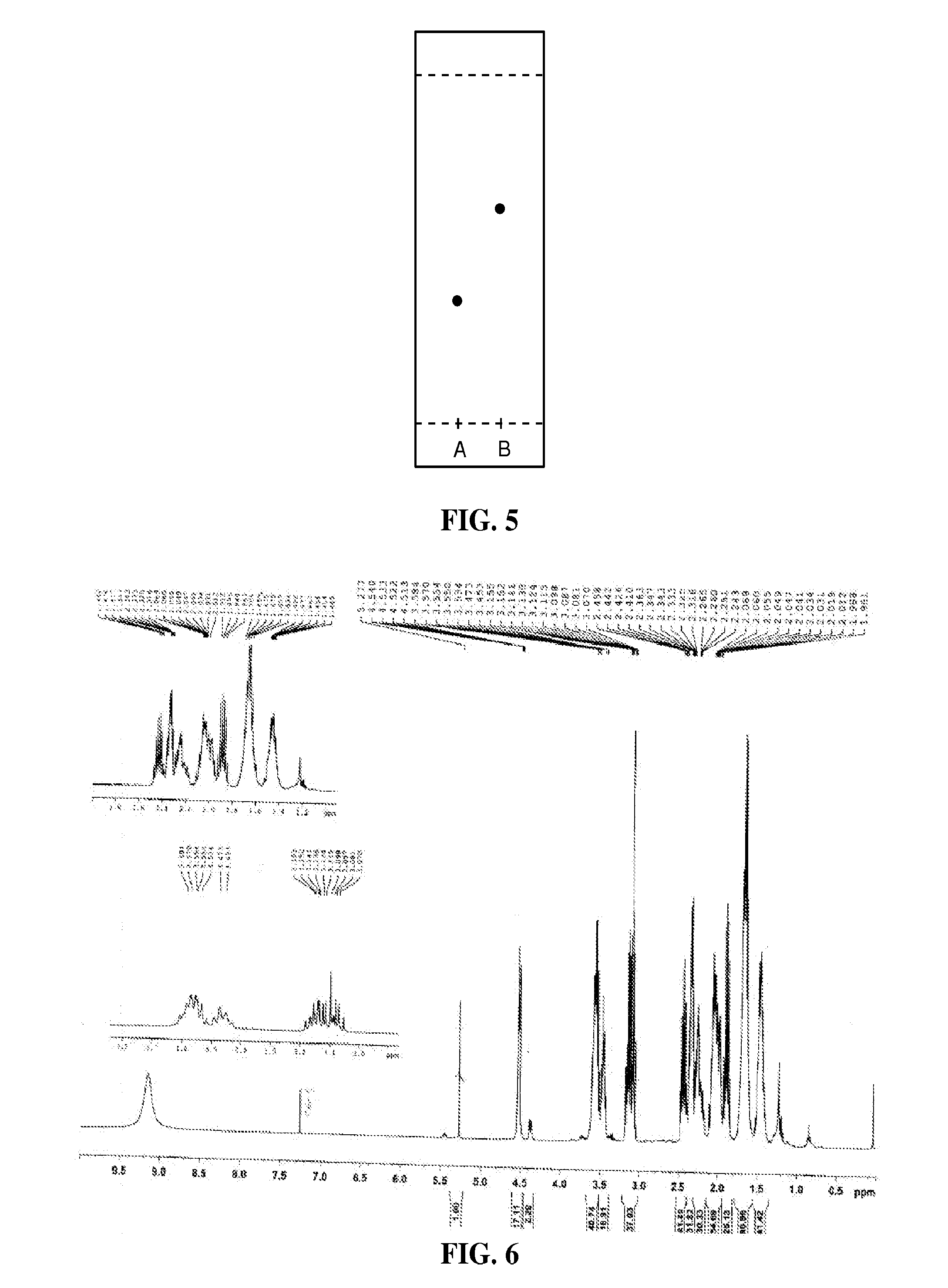Compositions and Methods for Treatment of Renin-Angiotensin Aldosterone System (RAAS)- Related Disorders
a technology of renin-angiotensin aldosterone and compound, applied in the field of compound and method for treating a renin-angiotensin aldosterone system (raas)related disorder, can solve the problems of affecting the treatment effect of ace, affecting the quality of life of patients, so as to reduce the activity of a
- Summary
- Abstract
- Description
- Claims
- Application Information
AI Technical Summary
Benefits of technology
Problems solved by technology
Method used
Image
Examples
example 1
Exemplary Compound Synthesis Scheme
To synthesize the compound of the present invention, a general synthesis approach is utilized that involves three basic steps. In the first step, a coupling reaction is performed to connect a pyrrolidine nitrogen-containing ring structure with the carboxylic acid group of lipoic acid to form an inert amide bond. Suitable coupling reagents that may be used in this step of the procedure include: EDCI (N-(3-Dimethylaminopropyl)-N′-ethylcarbodiimide hydrochloride; DCC (dicyclohexyl carbodiimide); and CDMT (2-chloro-4,6-dimethoxy-1,3,5-triazine). Also, in this first step, the bases that are used can include dimethylaminopyridine, triethylamine; and pyridine. Suitable chlorinated organic solvents that can be used in the first step include: dichloromethane (methylenechloride), chloroform, carbon tetrachloride, dichloroethane, and tetrachloroethane.
Briefly, the first step of the reaction is carried out under a nitrogen atmosphere. A Lipoic acid-like molecu...
example 2
Synthesis of 1-(6,8-Dimercaptooctanyl)Pyrrolidine-2-Carboxylic Acid
The synthesis of 1-(6,8-dimercaptooctanyl)pyrrolidine-2-carboxylic acid was performed by a three-step procedure starting from optically active L-proline methyl ester and alpha lipoic acid. L-prolyl methyl ester lipoic acid was synthesized by coupling L-proline methyl ester and lipoic acid using a suitable coupling reagent as shown in FIG. 1. Briefly, the first step of the reaction was carried out under a nitrogen atmosphere. Lipoic acid, 0.206 g (1 mM), L-proline methyl ester hydrochloride, 0.166 g (1 mM), 1 equivalent of dimethylaminopyridine (DMAP) 0.122 g (1 mM), and triethylamine 0.101 g (0.140 mL) were combined in a 100 mL round bottom flask. The contents of the flask were dissolved in methylenechloride (40 mL) and stirred well for minutes at room temperature. The coupling reagent, 1-ethyl-3-(3-dimethylaminopropyl)carbodiimide (EDCI), 0.287 g (1.5 mM) was added in portions over a period of 3 hours while the cont...
example 3
Synthesis of 1-(6,8-Dimercaptooctanyl)Piperidine-2-Carboxylic Acid
The synthesis of 1-(6,8-Dimercaptooctanyl)Piperidine-2-Carboxylic Acid was performed by a three step procedure that began with the synthesis of (DL)-pipecolinyl methyl ester lipoic acid from (DL)-pipecolinyl methyl ester and (DL)-alpha-lipoic acid. Briefly, the synthesis of (DL)-pipecolinyl methyl ester lipoic acid was completed by combining (DL)-pipecolinic acid methyl ester and (DL)-alpha-lipoic acid using a suitable coupling reagent, as shown in FIG. 9. The first step of the reaction was carried out under a nitrogen atmosphere. (DL)-alpha-lipoic acid, 0.206 g (1 mM); (DL)-pipecolinic acid methyl ester hydrochloride, 0.166 g (1 mM); dimethylaminopyridine, 0.122 g (1 mM); and triethylamine, 0.101 g (1 mM, 0.140 mL) were dissolved in methylene chloride (35 mL) and were combined in a 100 mL round bottom flask. The contents of the flask were stirred well for 5 minutes at room temperature. The coupling reagent EDCI, 0.28...
PUM
| Property | Measurement | Unit |
|---|---|---|
| Molar density | aaaaa | aaaaa |
| Mass flow rate | aaaaa | aaaaa |
| Pressure | aaaaa | aaaaa |
Abstract
Description
Claims
Application Information
 Login to View More
Login to View More - R&D
- Intellectual Property
- Life Sciences
- Materials
- Tech Scout
- Unparalleled Data Quality
- Higher Quality Content
- 60% Fewer Hallucinations
Browse by: Latest US Patents, China's latest patents, Technical Efficacy Thesaurus, Application Domain, Technology Topic, Popular Technical Reports.
© 2025 PatSnap. All rights reserved.Legal|Privacy policy|Modern Slavery Act Transparency Statement|Sitemap|About US| Contact US: help@patsnap.com



